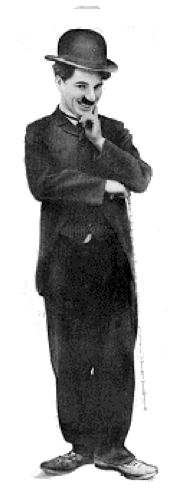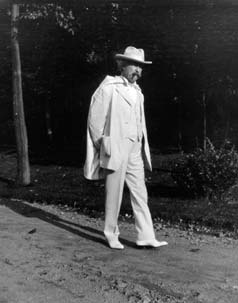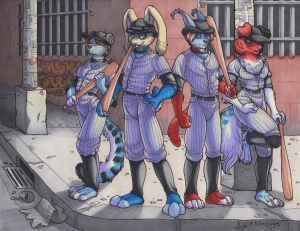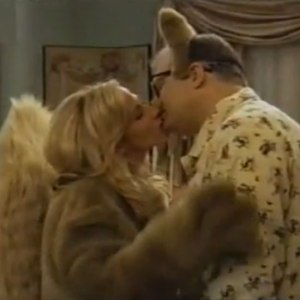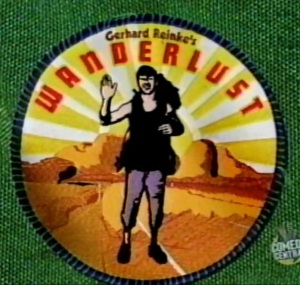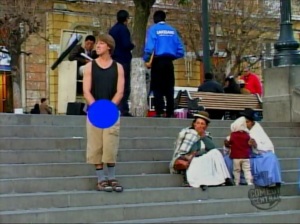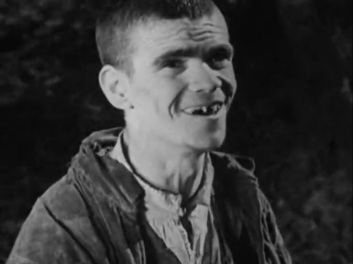Poetry Corner: James Tate
Tracy Wuster
As a poor-quality young poet, my verses were overwrought, melodramatic, and a bit odd. Then I discovered James Tate, and I decided that if I was to be a poet, then an odd humor would be my game. Years of teenaged notebooks were filled with poems cribbed from Tate–aping his tone, style, and playful surrealism. Then I discovered that I didn’t want to be a poet. I’d leave that to my older brother.
After a few short films that might have been influenced by Tate, I ended up in grad school studying humor. No poetry, per se, in my research, but I like to go back to Tate once in awhile to rediscover some of that absurd magic that shaped–and might continue to shape–my experience of language.
With our poetry editor away for a few months, I decided to step in with a couple of my favorite poems by Tate. I also found this article–James Tate: “The Cowboy” How to be funny and sad. BY STUART KRIMKO–which discusses one of Tate’s poems in terms of humor. Here is Tate reading some of his poems, with a biography. And two of Tate’s poems.
Teaching the Ape to Write Poems
They didn’t have much trouble
teaching the ape to write poems:
first they strapped him into the chair,
then tied the pencil around his hand
(the paper had already been nailed down).
Then Dr. Bluespire leaned over his shoulder
and whispered into his ear:
“You look like a god sitting there.
Why don’t you try writing something?”
James Tate, 1943
from Absences. Copyright © 1970 by James Tate.
The List of Famous Hats
Napoleon’s hat is an obvious choice I guess to list as a famous hat, but that’s not the hat I have in mind. That was his hat for show. I am thinking of his private bathing cap, which in all honesty wasn’t much different than the one any jerk might buy at a corner drugstore now, except for two minor eccentricities. The first one isn’t even funny: Simply it was a white rubber bathing cap, but too small. Napoleon led such a hectic life ever since his childhood, even farther back than that, that he never had a chance to buy a new bathing cap and still as a grown-up–well, he didn’t really grow that much, but his head did: He was a pinhead at birth, and he used, until his death really, the same little tiny bathing cap that he was born in, and this meant that later it was very painful to him and gave him many headaches, as if he needed more. So, he had to vaseline his skull like crazy to even get the thing on. The second eccentricity was that it was a tricorn bathing cap. Scholars like to make a lot out of this, and it would be easy to do. My theory is simple-minded to be sure: that beneath his public head there was another head and it was a pyramid or something.
From Reckoner, published by Wesleyan University Press, 1986. Copyright © 1986 by James Tate
American Humor Studies Association/Mark Twain Circle of America Quadrennial Conference 2014
American Humor Studies Association
Mark Twain Circle of America
Quadrennial Conference 2014
December 4-7, 2014
Four Points Sheraton French Quarter
The American Humor Studies Association, in conjunction with the Mark Twain Circle of America, sends out this general call for papers on American humor and Mark Twain. The topics below are suggestions for topics that we think will be of interest; other topics are welcome, and we welcome especially submissions of sessions of three papers or roundtables. The topics are broad in the hope that scholars will be able to find one that fits their current research. Submissions should be sent to Jan McIntire-Strasburg via email (mcintire@slu.edu). Please send your submissions by May 15, 2014.
Those sending in submissions for the Mark Twain Circle of America can email their proposals to Ann Ryan at ryanam@lemoyne.edu.
Topics include but are not limited to:
Early American Humor and its European Roots
Nineteenth Century Humor—from Southwest to Northeast to Far West
20th Century Humor and the American Novel
Regional and/or transnational humor
New Media Approaches to Humor
Humor in film, television, comics, and other visual media
Humor and Theatre
Stand-Up Comedy
Online humor
Humor and Ethnicity
Humor and Gender
Humor and Class
Humor and Sexuality
Humor and War
Contemporary Approaches to Irony, Satire, Wit, and other topics
Teaching Humor
New Directions in American Humor Studies
Mark Twain
In the Archives: Mark Twain’s Infectious Jingle– “A Literary Nightmare” (1876)
Tracy Wuster
Mark Twain’s “Literary Nightmare” (1876), published in the Atlantic Monthly, represents an early example of a “viral” piece of popular culture. The “Viral Text” project at Northeastern University is tracing 19th-century newspaper stories as they circulated, and “A Literary Nightmare” might be a unique example–being a story about a viral text–in this case, a poem–and its infectious effects, which in turn helped spread the original poem, Mark Twain’s story about it, and the very genre of poetry across the nation and, possibly, around the world. The story even inspired a song. And was being discussed as late as 1915.
The poem presented the key example of “horse-car poetry” that enjoyed a brief vogue as popular doggerel. A discussion of the phenomenon of “horse-car poetry” was printed in Record of the Year, A Reference Scrap Book: Being the Monthly Record of Important Events Worth Preserving, published by G. W. Carleton and Company in 1876. The story, beginning on page 324, details how a New York rail line posted a placard on fares that became a poetic sensation, leading to Mark Twain’s use of the lines in his story. The phenomenon of “horse-car poetry” then, according to the Record of the Year, spread to other cities and countries, causing an “epidemic” that aroused passions and even violence. The Record of the Year contains one story of a woman literally possessed by the sketch, reading in part:
The entire scene is worth reading at the link above.
Mark Twain’s extended comic sketch details the hypnotic, yet meaningless, power of humorous writing to infect one’s mind like a virus. Entitled “A Literary Nightmare” (February 1876), Twain’s piece starts with a verse of poetry:
“Conductor, when you receive a fare,
Punch in the presence of the passenjare!
A blue trip slip for an eight-cent fare,
A buff trip slip for a six-cent fare,
A pink trip slip for a three-cent fare,
Punch in the presence of the passenjare
CHORUS
Punch, brothers punch with care!
Punch in the presence of the passenjare!”
These lines, the narrator “Mark” writes, “took instant and entire possession of me.” For days, the only thing in his mind are the lines of verse—they keep him from his work, wreck his sleep, and turn him into a raving lunatic singing “punch brothers punch…” After several days of torture, he sets out on a walk with his friend, a Rev. Mr. ——- (presumably his good friend Rev. Joe Twichell). After hours of silence, the Reverend asks the narrator what the trouble is, and Mark tells him the story, teaching him the lines of the jingle. Instantly, the narrator puts the verse out of his mind. The Reverend, on the other hand, has “got it” now.
You can read the sketch in its entirety below.
Fortune Favors the Subversive:How Some Southwest Humorists Have Been Forgotten
When people talk about the Southwestern humorists today, they most often mean authors like George Washington Harris, author of the Sut Lovingood stories, Thomas Bangs Thorpe, who wrote “The Big Bear of Arkansas, “ or Johnson J. Hooper’s Simon Suggs stories. These authors were all Southern gentlemen for the most part—doctors, lawyers, or other professional men. Yet the humor they wrote was broad, often vulgar, and were delivered in a backwoods dialect with idiosyncratic spellings. They often began the tales with the “gentleman” narrator speaking directly to the reader—explaining that they had heard these stories while traveling through the back country from colorful, though uneducated characters.
Since these are the nineteenth century humorists most often anthologized, the casual reader might draw the conclusion that their brand of humor represents the whole of humor in the Old Southwest of the 1830s-1850s. Such an assumption, however, would be misleading. As with other periods in American literature, humorists wrote their tales and sketches on both sides of the spectrum. For every author whose characters depicted backwoods con men and uneducated rubes, there existed a corresponding author who represented the Southern gentleman who eschewed dialects and instead styled their sketches and tales in the more refined and educated writing reminiscent of their British counterparts. While they often also showed the rough side of the Southwestern frontier during its early times, the con men and (often) immoral characters were themselves educated. They used little dialect, wanting to demonstrate clearly for readers their own erudition.
Augustus Baldwin Longstreet appears to be the “missing link” between authors such as Hooper and Harris, who pioneered dialect humor, and authors such as Joseph Glover Baldwin, whose sketches represent a more “refined” Southern humor. His sketches alternate between two narrators (Hall and Baldwin). One is a typical Georgia “cracker”—a poor, edging toward middle-class white, the other more educated and less tolerant of vulgarity. In his tales, the gentlemanly narrator never lapses into dialect. His “Georgia Theatrics”, shows readers the sounds of an eye-gouging, fist pumping frontier fight, only to undercut the idea—the young man is only practicing what he would do if he were called upon to fight in the backwoods manner.
Furries: A Convenient Comedic Fiction
My bar trivia team changes its name with each new tournament. Every few months, this becomes a ritual where I pitch a series of disgusting and/or esoteric names like Bridget Jones’s Diarrhea or Rod Torfulson’s Armada Featuring Herman Menderchuk and the group rolls their eyes as they reject my ideas. In the last go-around, I became insistent that we name ourselves after one of the gangs from the 1979 cult film The Warriors. For no particular reason, I especially wanted to be called The Baseball Furies. In a flash of brilliance and to my surprise, a teammate suggested that we be called The Baseball Furries – combining the fictional gang with the name for people whose sexual fetish is to dress up like a Care Bear.1
This was a good name for a trivia team, but considering their usual aversion to jokes that might offend, I was surprised that the team was amenable to this name. It was difficult for me to imagine naming our team after any minority group – sexual or otherwise. I had to conclude that everyone pretty much assumed there to be no furries in the bar, nor would there be any in our social groups that could possibly take offense.
Furries might exist somewhere, but nowhere, we assume, near us. It makes them a convenient reference for a laugh about other people’s perversion. And yet, our assumption that it is a minority group so small as to be nonexistent belies our and everyone else’s assumed familiarity with the practice. For a group that barely exists, there sure are a lot of people talking about furries. This is why the group is “fictional” – the amount of discourse that surrounds furry-ism immeasurably outweighs the reality of its practice. That it is other people’s perversion is key. Furry fetishism is so far off the radar of seemingly possible sexuality that it has come to stand in as a marker for sexual deviance in comedy. It is a common target for television comedies like The Drew Carey Show, Entourage, and Check It Out with Dr. Steve Brule. And in a comic twist on “rule 34,” furry culture is the topic of a lot of internet mockery.2
In an episode of 30 Rock, unlucky-in-love Liz Lemon finds a seemingly great guy who is single. Too good to be true? Yes – he’s a furry. This is reminiscent of the “all the good men are gay” sitcom trope where a woman falls for a gay man. One variation of this trope, which became the basis for Will and Grace, has a female character only realize at a humiliatingly late moment that her crush is gay. The key difference between Grace and Liz, however, is that while Will’s sexuality allowed the pair to easily reformulate their relationship as friends, Liz was so horrified at the prospect of furry-ism that it was borderline unimaginable for her to spend any more time with this man. And as the primary surrogate for the audience, it was implied that the we too should be comically horrified by the prospect of explorations in furry sexuality. That kind of experimentation was Jenna’s domain.
It is difficult to imagine, in the current media environment, having a character like Liz Lemon be horrified by a homosexual. Homer Simpson could get away with homophobia in 1997, as long as he learned tolerance by the end of the program. Although homophobia still exists in American comedy, the kind that would blatantly encourage a kind of abject dread is not terribly common in contemporary mass media. This is due to a host of factors, notably general changing social mores as well as more pointed calls for responsible representation by gay rights groups. Jokes constantly change their particulars while maintaining a common structure. That some gay jokes have shifted their target to furries is thus less notable than the fact that jokes have shifted from an identifiable group to a practically unidentifiable one.
And this is neither only nor simply an issue of redirected homophobia. Jeffrey Sconce provocatively suggests that “the unconscious is slowly dying out” in part because of, “the Internet’s ability to actualize any and all erotic scenarios in seconds.” From a Freudian standpoint, the lack of an unconscious would obviate the need for humor or sexual shame, so why do we seem stubbornly stuck with jokes at the expense of furries? Furry jokes demonstrate at least some aspect of the unconscious is alive and that it is desperately trying to Other furries in an attempt to normalize the things of which we are all silently ashamed. We need furries because they make your internet browser history seem less embarrassing. But beware. Once that stuff becomes normalized, there will be few places left to go for the thrill of perversion. Someday, we will all become furries.
1I am aware that sex is supposedly only a part of this subculture, but let’s be honest – that’s how everyone thinks about this group. Read on in any case, because this relates to my point.
2Rule 34 states that on the internet, if it exists, there is porn of it.
An Interview with Judith Yaross Lee. With an excerpt from “Twain’s Brand.”
Tracy Wuster
We are very excited to present this interview with Judith Yaross Lee. Judith is Professor & Director of Honors Tutorial Studies in the School of Communication Studies at Ohio University. She is the author of, among many works,Defining New Yorker Humor and Garrison Keillor: A Voice of America.
Judith is the new editor of Studies in American Humor. Through the American Humor Studies Association, and on her own, Judith has mentored many humor studies scholars, including myself. It is a pleasure to print this interview and an excerpt of her excellent and important new book: Twain’s Brand: Humor in Contemporary American Culture. (Find an Excerpt here).
Tracy Wuster: Tell me about your start in humor studies. How and when did you begin pursuing it as a subject? who has influenced you as a scholar of humor?
Judith Yaross Lee: I had the great good fortune to take a course on Mark Twain with Hamlin Hill in my first quarter of my M.A. program in English at the University of Chicago, where I was first introduced to the study of humor as an interdisciplinary historical and cultural study, largely through my ancillary reading in Henry Nash Smith, later augmented by the works of early American Studies luminaries such as Perry Miller and Leo Marx.
Then in my second year of doctoral study I had another course with Ham, a seminar in contemporary American humor in which I was one of just two students (I guess we were the only ones who trundled over to the department office to find out what the special topic was, because all our friends were jealous when they learned about it). We were so intimidated by Ham’s expertise and so worried about holding up our end of the discussion–my classmate had taken the regular course in American humor from  Walter Blair, who was retired but had filled in during Ham’s sabbatical, but I had not–that we spent huge amounts of time preparing each class. The result was that both of us had found dissertation topics by the end of the term. My dissertation covered humor in six novels by Melville, Twain, Faulkner, Nathanael West, and Philip Roth under the pompous title “To Amuse and Appall: Black Humor in American Fiction.” I never published it or any piece of it, though I revisited two of the novels in Twain’s Brand, which now that I think of it has a similarly large scope, though this time around I felt more able to manage it.
Walter Blair, who was retired but had filled in during Ham’s sabbatical, but I had not–that we spent huge amounts of time preparing each class. The result was that both of us had found dissertation topics by the end of the term. My dissertation covered humor in six novels by Melville, Twain, Faulkner, Nathanael West, and Philip Roth under the pompous title “To Amuse and Appall: Black Humor in American Fiction.” I never published it or any piece of it, though I revisited two of the novels in Twain’s Brand, which now that I think of it has a similarly large scope, though this time around I felt more able to manage it.
So obviously the Chicago school of neo-Aristotelian formalism and the Blair-Hill school of humor and Mark Twain studies influenced me from the start, as did the humor theory of Constance Rourke, whose work I felt did not have the stature it deserved. But I was mortified when, soon after defending my dissertation in 1986, I read Emily Toth’s “A Laughter of Their Own: Women’s Humor in the United States” (1984) and realized how little I knew about women humorists, so I began devouring the pioneering articles and books by Nancy Walker, whose scholarly rigor I appreciated as much as her insights, and by Regina Barreca, whose first book had such an exciting title—They used to call me Snow White– but I drifted: Women’s strategic use of humor (1991)–that I ordered it something like a year before it came out. About the same time I was also inspired and greatly helped by David Sloane, especially his bibliographic work; his American Humor Magazines and Comic Periodicals (1987) is a trove yet to be fully mined.
In the 1990s (like everyone else) I also began reading Bakhtin, whose focus on the “lower stratum” I found immediately satisfying and much more congenial than Freud’s joke theory. However, I have also been strongly influenced by communication theory–most strongly by the medium theory of Walter Ong and the performance theories of Erving Goffman–and cultural theorizing by Edward Said and W. E. B. DuBois, among others. I like Johan Huizinga on play, which I think has strong overlaps with humor as a non-instrumental form of human expression. I confess to love reading humor theory!
TW: Was there resistance from others in your field or department to the study of humor as a “non-serious” subject?
JYL: I felt a lot of encouragement from my professors at the University of Chicago. Because Ham left before I was ready to write my dissertation, however, I worked with three other Americanists, William Veeder, as director, John Cawelti, as second reader, later replaced after he left by James E. Miller, Jr. John was a pioneer of popular culture historiography and theory, so he had no qualms about my work on humor, but Bill, who worked mainly on 19th-century fiction, insisted that I prepare for a field exam in an unequivocally serious or heavy topic in order to demonstrate to a search committee that I was not an academic lightweight and that I could contribute to the core teaching mission of an English or American Studies department. (I was inclined toward the latter, but those jobs were very scarce.) That was wise advice, as my decision to do a special field in theories of literary effect as particularly relevant to humor that landed me my current position in the Rhetoric and Public Culture program in the Scripps College of Communication at Ohio University.
Humor has not been an issue at either of the two schools where I’ve been on a tenure line. My colleagues in the School of Communication Studies have promoted me through the ranks since I arrived as an advanced assistant professor in 1990. Far from exhibiting prejudice against my topic, they think of my work as hard-core traditional humanities scholarship because of my archival and historical research methods. I am grateful for their collegiality and open-mindedness.
Before Ohio I had an assistant professorship teaching composition at LaGuardia Community College/CUNY, which was a wonderful place to learn the ropes of being a teacher and faculty member. And before that, while writing my dissertation, for many years I taught composition and occasionally media theory as an adjunct. I often marvel at my good fortune at escaping the adjunct ranks.
I should note for graduate students in English and American Studies that I have not held a position in one of those departments since 1990. But other American humor studies colleagues have, so perhaps they can speak more directly to issues of the job search. Most of them, like me, have their fingers in some more conventional or highly valued pies for their teaching and research portfolios–often particular authors or themes, or in my case, media history (including periodicals) and theory. Humor colleagues probably don’t know that I published a theory of email in 1996.
TW: What have been the most interesting developments in humor studies in your time in the field?
Ethical Conundrums: Gerhard Reinke’s Wanderlust and Las Hurdes
You probably never saw it, but it was a funny show with something and nothing to say. Back in 2003, Jimmy Kimmel’s Jackhole Productions produced six episodes of a show for Comedy Central called Gerhard Reinke’s Wanderlust. Each week, its fictional German host (played by American Adam Gardner) toured some part of the world – usually some part of the third world. Gerhard Reinke was a hapless traveler. He succumbed to some sort of travel-related malady in nearly every show – from bugbites to embarrassing erections.
When a situation demanded caution, he was gullible. Where compassion would have been appropriate, he was shrewd. After cheerily explaining that, “Bolivia’s economic crisis makes it one of the cheapest places in the world!,” he rather cruelly haggles over seemingly low-value currency with a presumably poor woman selling a llama fetus in La Paz’s “witch’s market.”
Though his travel skills were severely lacking, Reinke fared little better as a television host. On the easier side of the show’s humor, his thick German accent led to some cheap laughs when he visited “Wenice Beach” California. But his challenged hosting skills could demonstrate a sharper satirical edge as well. As evidenced in his celebration of Bolivia’s troubled economy, his narration rarely matched the tone demanded of a situation. While Gerhard cheerily described the miseries caused by international economic inequality, he was deadly serious when dealing with insubstantial maladies or undertaking any of his projects (like searching for Bigfoot or writing erotic fiction). Fundamentally, these moments of tonal contradiction evidenced a self-centeredness that appears to trouble the ethical positions of both the tourist and media consumer in a global economy. At the same time, it is a comedy and as such it is better at critiquing than offering solutions.
In this way, it is reminiscent of Luis Buñuel’s 1933 film Las Hurdes: Tierra Sin Pan (English: Land Without Bread). This film, also a mockumentary travelogue, offers its audience a view of an economically disadvantaged peasants living in the Hurdes region of Spain. While not as obviously comic as Wanderlust, Buñuel’s humor relies on a similar tonal mismatch. The narrator of this film remains disinterested and at times even amused as he describes and comments on the terrible conditions of the film’s subjects. Gerhard’s relationship to his audience is a bit more complicated. Unlike the disembodied “voice-of-God” narrator of Las Hurdes, Gerhard is a transparently flawed host. Laughing at Buñuel’s narrator feels somewhat like laughing at myself. The laughter directed at Reinke is less reflexive – it is directed at the over-confident “German” doofus. Still, laughing at Gerhard is not entirely unproductive. Although he does not implicate the viewer as directly as does Las Hurdes‘ narrator, we still must accept Reinke’s position as viewer surrogate in our relationship to this media text. And unlike in Buñuel’s film, we here see the figure of the tourist in some of its worst excesses. This kind of misery-tourism might be subtly suggested in Las Hurdes, but it is a major and explicit theme in Gerhard Reinke’s Wanderlust.
In perhaps its most obviously comic moment, Las Hurdes shows a goat scaling a rocky cliff. “One eats goat meat only when one of the animals is killed accidentally,” explains the narrator. “This happens sometimes when the hills are steep and there are loose stones on the footpath.” A puff of smoke billows in from offscreen and the goat falls. The narrator has lied to us. The goat did not trip – it was shot. While the whole film seems to ask what the viewer’s responsibility might be towards disadvantaged Others, this moment suspends those questions to ask more fundamentally what and how we actually know about the people and things we witness from the other side of the screen.
Similarly, though with more broadly comic strokes, Wanderlust mixes a heaping dose of falsity into its documentary explorations. Every episode devolves into some kind of fictional narrative as Gerhard joins a Marxist revolutionary group or struggles with an affliction known as “pee shyness.” So although a good part of both texts ask us to think about our relationship to other human beings, these moments undercut their moral imperative by asking how we can even know the experiences of others in these distant places. There seems to be on the one hand an imperative to act based on the documentary evidence of human suffering. But there is also a more radical proposition that we can’t trust texts like the ones we are watching, which undercuts the moral certainty of the first proposition.
So which is the more powerful argument? Neither Las Hurdes‘s narrator nor Gerhard Reinke (or Luis Buñuel or Josh Gardner) will tell us. Despite the apparent intended message of Las Hurdes, it offers a message of resignation in the face of suffering. While the concern with other humans seems the more ethically defensible position, the proposition that these media themselves are untrustworthy denies such neat moralism. Disturbingly, the warnings against being overly trusting of such appeals seems to be the more powerful message here. So don’t worry too much about the Hurdes or the poor woman selling the llama fetus: they might as well be fictional.
In the Archives: Edgar Allan Faux (1877 then 1845)
They say humor is based on timing. Yes, as is everything else. Ask Elisha Gray about telephone patents. I was plugging along, working on a piece about the comedian Dana Gould, and still figuring out when I would finish writing about Mark Twain and the German language, when an article in my local newspaper caught my attention:
“Dead Poets Society founder visits 300th grave”
The fact that there’s an actual Dead Poets Society prompts visions of Ethan Hawkes’s teeth and an involuntary desire to kill Robert Sean Leonard. Swallowing my bile I learned that the current founder, Walter Skold of Freeport (Maine), has visited the gravesites of 300 poets “ahead of this weekend’s fourth annual Dead Poets Remembrance Day.”
What is “Dead Poets Remembrance Day”? Apparently, “with the help of 13 current and past state poets laureate,” Skold was able to dedicate October 7—“the day that Edgar Allan Poe died and James Whitcomb Riley was born—to heightening public awareness of the art of poetry.
The article posted October 5. That was Saturday. Making the actual memorial day a Monday. Today. My day to submit. So in honor of dead poets everywhere (and as one who writes the occasional verse and considers the artform dead, and therefore all practitioners the undead) let us examine the two poets tied to this day. What the article does not share is an appreciation for not just the day, but the year. On October 7, 1849, as Edgar Allan Poe lay dying of possibly drunken Rabies in a Baltimore medical college, James Whitcomb Riley was borning in Greenfield, Indiana.
Happy Birthday, T.S. Eliot!
Poet T.S. Eliot was born in Saint Louis 125 years ago today. He professed that “Genuine poetry can communicate before it is understood.” His genius for making that immediate connection with readers earned him great success.
Complex, dense poetry doesn’t often garner widespread public popularity, but The Love Song of J. Alfred Prufrock and The Wasteland certainly did.
In addition to his weighty works, he wrote some light children’s verses. The poems that made up his Old Possum’s book of Practical Cats were the basis for the musical Cats.
Here is a recording of Eliot (aka “Old Possum”) reciting an excerpt from that work:
While Eliot was fond of cats, four years ago it came to light––through the unpublished poem below––that he had a certain good-natured contempt for cows.
Of all the beasts that God allows
In England’s green and pleasant land,
I most of all dislike the Cows:
Their ways I do not understand.
It puzzles me why they should stare
At me, who am so innocent;
Their stupid gaze is hard to bear —
It’s positively truculent.
I’m very inconspicuous
And scarlet ties I never wear;
I’m not a London Transport Bus,
And yet at me they always stare.
You may reply, to fear a Cow
Is Cowardice the rustic scorns;
But still your reason must allow
That I am weak, and she has horns.
But most I am afraid when walking
With country dames in brogues and tweeds,
Who will persist in hearty talking
And stopping to discuss the breeds.
To country people Cows are mild,
And flee from any stick they throw;
But I’m a timid town bred child,
And all the cattle seem to know.
But when in fields alone I stroll,
Oh then in vain their horns are tossed,
In vain their bloodshot eyes they roll —
Of me they shall not make their boast.
Beyond the hedge or five-barred gate,
My sober wishes never stray;
In vain their prongs may lie in wait,
For I can always run away!
Or I can take sanctuary
In friendly oak or apple tree.©The Estate of T. S. Eliot


